Horrific Inquiry: TERRIFIER (2016)
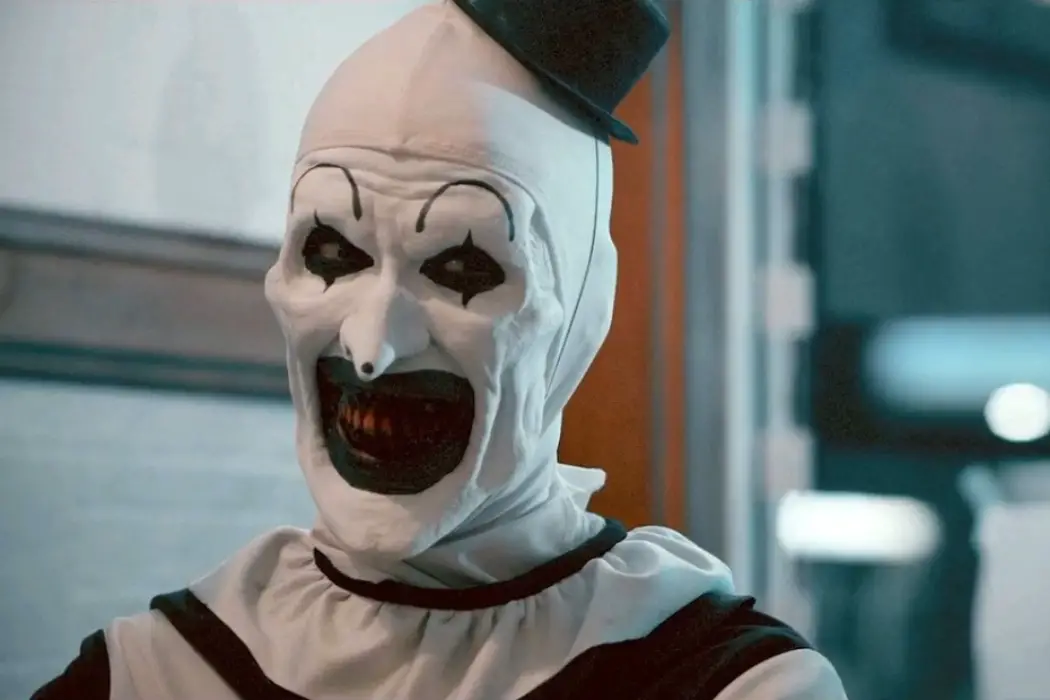
Stephanie Archer is 39 year old film fanatic living in…
Welcome back to the scariest, and at times goriest, column here at Film Inquiry: Horrific Inquiry. Twice a month, I will be tackling all things horror, bringing two films back into the spotlight to terrify and frighten once more. And occasionally looking at those that could have pushed the envelope further. Join us as we dive deep into the heart of horror, but warning, there will be spoilers.
“Punctuality is the thief of time, dear.” – The Terrifier (2016)
It’s not often that a horror sequel spawns interest in its original film. Too often, sequels prove themselves to be a lesser counterpart, struggling to even match what made the original so successful. Yet, every once in while a sequel excels, the hype and positive reviews bringing attention to its source material. Most recently, this has become the case with Damien Leone‘s Terrifier. With the release of Terrifier 2, followed by its impressive Tomatometer score, I found myself needing to see its original before I could dive into its conclusion. And while the Terrifier may not be the first time audiences were introduced to Art the Clown, having appeared in the anthology feature All Hallow’s Eve, here, Art is given a horror all his own. And oh, does he ever live up to the opportunity.
In my first splatter film coverage for Horrific Inquiry, I add an additional warning. This is not for the faint of heart.
Setting the Tone Early
After seeing an increasing number of posts on Twitter surrounding the film these last few months, Terrifier had been on my radar for a while. Yet, with only its trailer and a few images online, this B-horror seemed to be a rough-cut student film, chalking up to more of a short film proof of concept than a film potentially launching a franchise. How wrong I was. Its B-class horror film style is its strength, giving a raw and rough feel to the heightened showcase of violence presented. From the very beginning, Terrifier is unafraid to make you uncomfortable and squirm in your seat – all while piquing your interest.
As eerie music fills your ears, the screen opens on a television in the middle of an abandoned room. Dark and dank, the room feels ominous, the camera slowly zooming in on the in-and-out static feed of the program. A woman empathetically welcomes its audience into the coverage of the one-year anniversary of the Miles County Massacre – in attendance the only survivor. As the camera turns to our sole survivor, as an audience you find it difficult to not be horrified. Where we expect to see the scar free face of a final girl, instead we are met with the grotesque remains of a bulging eye and mutilated face. As she speaks of the self imposed isolation, the conversation turns to Art the Clown. And while it is mentioned that his body disappeared from the morgue, the soul survivor confirms he died – she saw it with her own eyes.
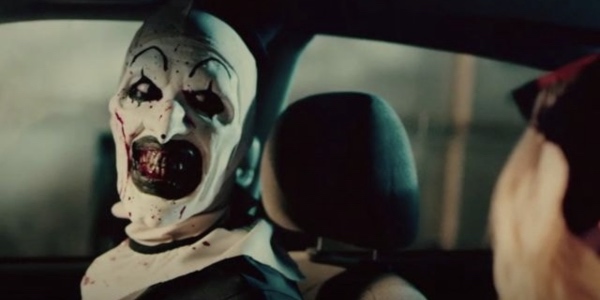
And while writer and director Leone is determined to make his audience as uncomfortable as possible early on, he is equally determined to set the stage for the level of gore the film will embrace. As interviewer Monica (Katie Maguire) regals the success of her interview to her husband, she berates the young women, stating she would rather be dead if anything like that happened to her. There is a rustling behind the clothing rack, and audiences holding their breath as they expect Art the Clown (David Howard Thornton), missing since last year, to appear. What will unsettle and shock is the appearance of the mutilated woman. As she leaps out from the right of the screen, she immediately brings a raw brutality with her. Attacking Monica, she mutilates her face to match hers, ripping through her audience with maniacal laughter. There is a madness that resonates, and will sit in the pit of your stomach as her maniacal laughing transitions into that of Tara (Jenna Kanell) and Dawn (Catherine Corcoran).
B-horror
As the film transitions, it begins to take on more of a B-horror film feel, the filming losing much of its quality and the sound poorly edited – primarily on the city’s streets. And while Terrifier weaves in an out of its B-horror quality, there is a unique elevation it presents to the film. One moment a bit cheesy, many times due to the film’s dialogue, another gloriously horrific, its cinematography of lights and shadows from George Steuber playing with the black and white costume design of the clown while elevating the already outstanding performance by David Howard Thornton.
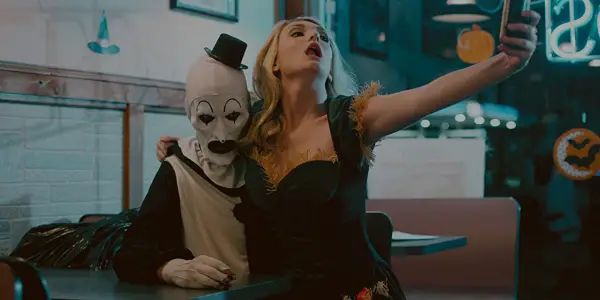
Where it feels most in its B-horror vibes is in its introduction of its future body count and the buildup to the opportunity Art the Clown is crafting. As Tara and Dawn make their way down the street from a Halloween party, they spot Art the clown, surrounded by an ominous yet tranquil blue glow. And while he initially delivers “the creeps”, he quickly disappears, leaving the girls to decide whether they will drive home drunk or head to a local pizza joint to sober up. As they wait for their pizza, the clown makes his way inside as well, clearly taken by Tara. The dialogue both here, and later as Tara and Dawn wait for a pickup following a flat tire, leave much to be desired, yet it is Art the Clown that truly steals the spotlight. There is an eerie nature to him, not only in look but in movement as well.
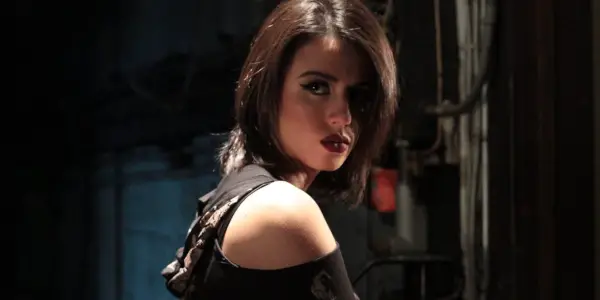
Howard Thornton is incredible as Art the Clown, only elevating his performance and terrifying presence as the film continues. From the devilish finger wave to the terrifying smile he allows to snap across his face, his silent performance is one of the most terrifying mimed acts I have ever seen. He will make even the biggest clown fan run with fear. There is no hesitation in his performance, only dedication. Howard Thornton makes the film as successful as it is, and is the core reason a sequel would succeed as well.
Gory Production
I would be remised though if I did not acknowledge the incredible gore and special effects that went into this horror. Terrifier is violent, brutal and unforgiving. And better yet, its far from predictable. Even when you think you know where the clown is or where the blow is going to come from, you will find yourself sorely mistaken. It makes the brutality punch that much more, and the jump scares just as effective. With each new gory moment, you understand not only why the film was such a successful B-horror, but why people wanted more.
From its opening moments of Victoria (Samantha Scaffidi) mutilating the reporter to each kill Art the Clown engages in, the film never eases on its audience. It is hard to watch at times, which leaves intrigue in the fact that audiences are falling sick or leaving showings during screenings of its sequel. Dawn and Cat Lady’s (Pooya Mohseni) deaths rank the most gruesome, with the camera never looking away. And with each graphic murder, Art the Clown becomes less the terrifier, instead closing in on the idea of the camera and the eye behind it.
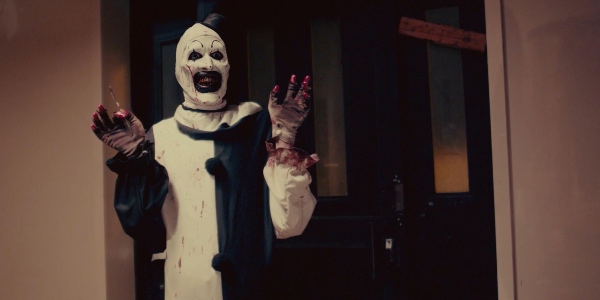
There is a moment when Victoria finds herself hiding in a closet, peering at Art through a hole in the door. There is an iris lens creation that mimics the camera, horrifying both Victoria and the audience with what we see. There is an embodiment of the terror she is witnessing through a wooden lens, capturing the memory in her mind – one that she later recreates with the reporter. And as we look at all the references that ruminate through the film, ones that are clearly influential to director Leone, we see the parallels of not only witnessing the terror, but becoming the terrifier ourselves.
Conclusion
When speaking of references, Terrifier is a beautiful creation of originality and homage. As the film works through each scene, motion and design, audiences will feel the classics that came before, many times able to point out the influences that became a passionate infusion of horror. While references such as Saw, House of a 1,000 Corpses and Hostel seem obvious, others, including Nightmare on Elm Street, The Man Who Laughs, Scream, Silence of the Lambs and even Joss Whedon‘s Buffy the Vampire Slayer episode “Hush”, less so.
Unpredictable and unapologetically violent, Terrifier may seem like a B-horror, but it is far from it. Led by outstanding special effects and an incredible performance by David Howard Thornton, Terrifier packs an undeniable punch and the potential for Art the Clown to return time and time again.
Have you seen Terrifier? What did you think? Let us know in the comments below!
Watch Terrifier
Does content like this matter to you?
Become a Member and support film journalism. Unlock access to all of Film Inquiry`s great articles. Join a community of like-minded readers who are passionate about cinema - get access to our private members Network, give back to independent filmmakers, and more.













